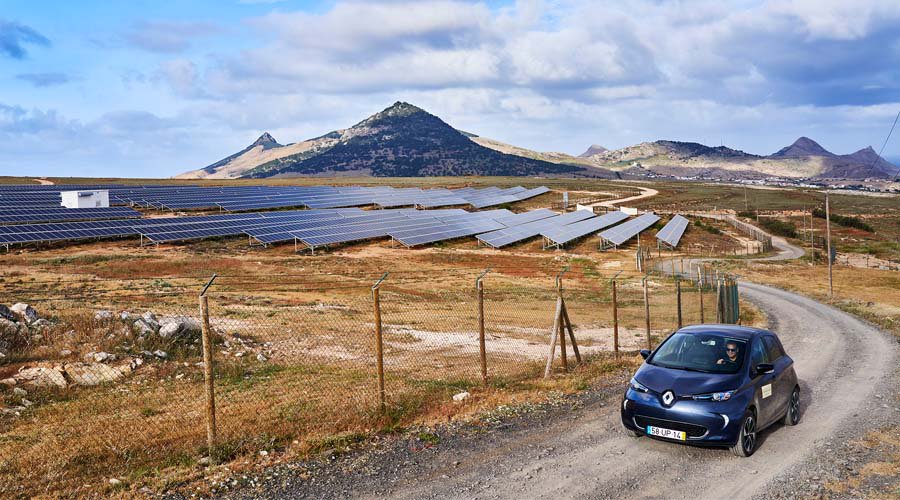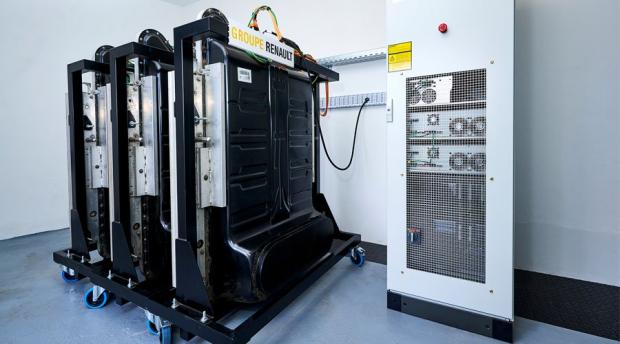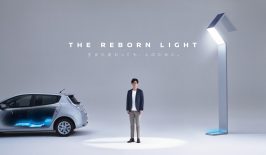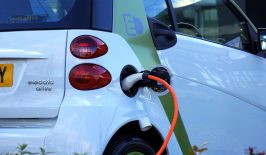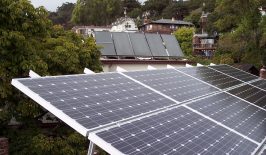Electric vehicles – powered by batteries, and not by burning fossil fuels – are the key to a future where travel is clean, non-polluting and emissions-free. But for that to happen, the electricity that our electric vehicles use also has to come from clean, renewable sources too. If they don’t, the problem of the emissions simply moves from the vehicle to the power plant. And when it comes to producing renewable energy, there are natural fluctuations, of course – the wind doesn’t blow the same amount 24 hours a day, you can’t produce solar energy after sunset and even during the day, you can’t be sure that panels will be able to catch enough rays. And sometimes, you also end up generating more energy than you need.
That’s why Munich-based energy innovation company The Mobility House is working on a vehicle-to-grid (V2G) solution – where electric cars serve as intermediate storage for renewable energy. Another project they’re working on is second-life battery energy storage – recycling discarded electric car batteries and turning them into storage for surpluses in energy production.
Now, on a small Portuguese island in the North Atlantic, they’re linking together these two innovations – the V2G and the second-life battery storage units – via a software, the so-called “Marketplace”, and adding electric cars and smart charging stations into the mix, in a bid to create to boost the island’s energy independence and encourage the production of renewable energy.
The island of Porto Santo is located in the North Atlantic Ocean, about 40 km from Madeira. About 5,500 people live on the island, which covers an area of around approximately 42 square kilometres. The size provides an ideal starting point for the pilot project, which aims to turn the holiday destination into a “Smart Fossil Free Island”. The project, which is being run with the support of Renault and the local energy provider Empresa de Electricidade da Madeira, kicked off in early 2018. Twenty Renault electric cars were handed over to residents and public institutions such as the police and 40 charging stations were installed on the island, equipped with a controller and connected to the internet.
The Marketplace software, which connects the electric cars, the battery storage units and the power grid, is cloud-based and monitors the levels of supply and demand levels among the current energy usage. If more renewable energy is produced than is needed, that electricity is passed on to stationary storage facilities, e.g. connected electric cars or batteries. If the demand is greater than the electricity produced, then those stationary storage facilities release the energy back into the grid. And to ensure that there’s always enough power in the cars’ batteries to get from A to B, there’s an app residents can use to control the minimum amount of power that is to be stored in the car battery at all times. However, the island’s modest size means that the range anxiety often associated with electric vehicles shouldn’t be a problem there anyway. It remains to be seen, therefore, whether the results of the project can be scaled up to suit locations where vehicles might have to travel longer distances.
According to The Mobility House, renewable energies currently make up 15 percent of the island’s energy mix: 1.1 megawatts are generated by wind energy and 2.0 megawatts by solar energy. A large part of the rest of the energy is currently still generated by diesel generators, as the power grid is relatively small and isolated. But that’s set to change – their ambitious goal is to make the entire island fossil fuel free, and more wind and solar power plants are set to be constructed in the long term. “In Porto Santo we’ve been able to prove that a world without fossil fuels is possible,” says Thomas Raffeiner, founder and CEO of The Mobility House.
However, the production of the batteries that are needed for a project like this are still not exactly known for their sustainability; with the mining of lithium and other rare materials in particular having huge environmenta. Reusing car batteries is a step in the right direction – by turning them into storage and saving them from the scrapyard. But one key question still remains: how can the production of electric vehicles be made more sustainable? And it’s a question to which the whole e-mobility sector has to find an answer.
This is a translation by Marisa Pettit of an original article that first appeared on RESET’s German-language site.
